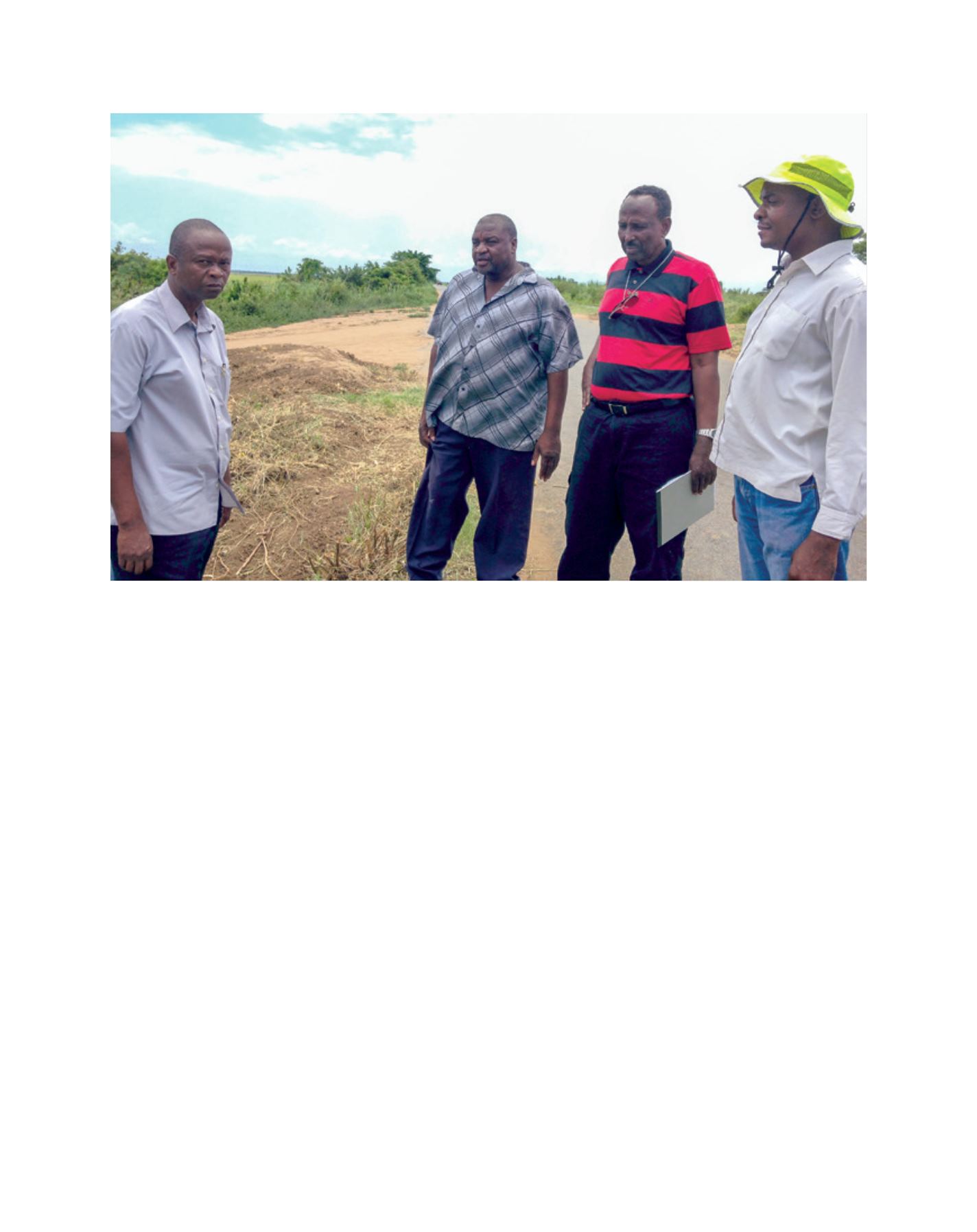

[
] 20
Rehabilitation of Chókwè irrigation scheme
The development objective of the Chókwè irrigation scheme
rehabilitation project was to enhance agriculture produc-
tion and productivity and consequently farmers’ income in
the Chókwè irrigation scheme area. This contributed to the
rehabilitation of the existing 50-year-old irrigation scheme
covering 7,000 ha as well as enhancements to agriculture
productivity.
The Chókwè irrigation scheme is located 250 km from
Maputo, the capital city of Mozambique. It is in the Gaza
Province, downstream of the Limpopo river and extended
along the eastern side of the river. Rehabilitation of the
irrigation scheme has improved the livelihood of the 5,000
smallholder farmers, enabling them to come out from
subsistence farming and become small commercial farmers.
The rehabilitation of the scheme improved the secondary
and tertiary canal network with flumes up to on-farm level.
Improved furrow irrigation was introduced on farms after
levelling the land. The project achievements include:
• existing water supply facilities were increased from 1,200
ha to 7,000 ha
• investment in irrigation facilities improved the
socioeconomic status of more than 5,000 smallholder
farmers and provided them with access to irrigated lands
• agriculture production increased, with main crop rice
yield increasing from 1 t/ha to 5 t/ha
• 2,120 km of water delivery canal was rehabilitated to the
flume system, increasing water efficiency from 62 per cent
to 96 per cent.
In the irrigation sector the main challenges are related to poor
management of irrigation and drainage systems, low levels of
land preparation and operation and maintenance costs which
affect agriculture productivity.
4
The main and primary irriga-
tion canals are running well, but secondary and tertiary canals
are still not rehabilitated. The tertiary canals, especially, are
seriously damaged as they were built in the late 1950s.
The local smallholder farmers are challenged with the
operation and maintenance of the on-farm scheme, which
identified a shortage of agricultural machinery and proper
agro inputs such as improved seeds, fertilizers and land prep-
aration. Thus, the irrigation area is developing slowly and
farming efficiency and crop yields are low. This area has very
productive soil, but a lack of agricultural investment and low
levels of agricultural technology has led to a great waste of
local agricultural resources and obstacles to the further devel-
opment of the regional economy.
The local smallholder farmers lack technical knowledge
of modern agronomic and irrigation practices as a result
of outdated or missing technology and a lack of technol-
ogy transfer infrastructure. Insufficient technology and
information are further exacerbated by the institutional
setting in which irrigators operate. One example of a
water management problem is the basis for determining
the irrigation water requirement for crops. Both irrigation
systems and crop varieties have changed considerably over
time as farm field sizes have decreased, groundwater levels
and mineralization have increased, cropping patterns have
diversified (particularly as centralized planning was abol-
The Chókwè irrigation scheme rehabilitation project aimed to enhance agriculture productivity and farmers’ income in the area
Image: IDB
L
iving
L
and
















